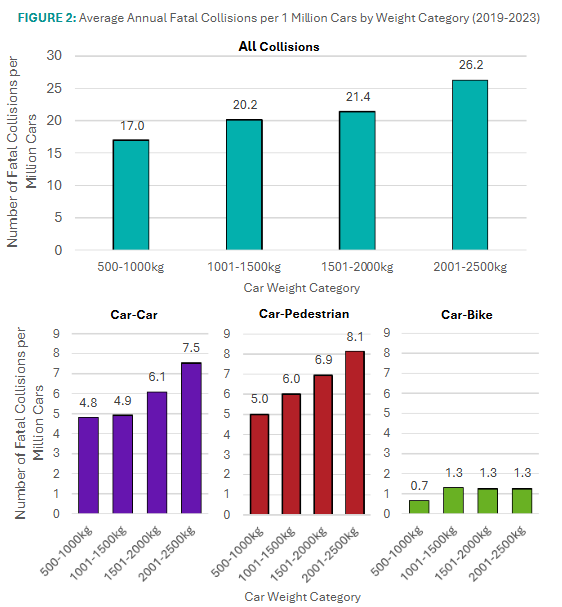Making streets safer: how are we doing? #158
That all depends on where you look.
This week, we’re interested in policies that follow the data. Vision Zero, the target to eliminate death and serious injury from the streets, is (or at least should be) led by data, of which there is a fair amount.
So how are we doing on that?
BIG STORIES FOR CYCLING ADVOCACY
DIRECT VISION SAVES LIVES. Transport for London has for years been ratcheting up lorry safety in the capital. Lorries are a fraction of traffic, yet a substantial contributor to fatalities. ‘Direct vision’ lorries are those whose drivers can see around their cab without the aid of mirrors or cameras. The city’s star rating system has required higher lorry standards year on year, things like lower cabs and larger windows, and by 2023 there was a 62% drop in vulnerable road users killed in lorry collisions.
SIDE ROAD ZEBRAS - AN IDEA WHOSE TIME HAS COME. Simple side road zebras could cost-effectively transform walking comfort and reinforce the priorities for pedestrians within the Highway Code. It’s a topic I, along with Laura Laker, Chris Boardman and Westminster City Councillor, Max Sullivan discuss on the latest Streets Ahead podcast. The data, and their long-running existence in Europe, tell us they work; it’s time to update the guidance and permit them nationwide.
GRADUATED DRIVING LICENSES REJECTED. Young drivers, mostly men, are responsible for a disproportionate number of fatal collisions globally - and road safety campaigners have been pushing for graduated driving licenses (GDLs) for years. GDLs see new license holders restricted to driving at certain times of days or locations - and it’s a policy that works. Since GDLs’ introduction in Canada the number of young drivers killed dropped 83%. Yet the government says there’s no plans to introduce them. This Sky News piece delves into the facts.
2OMPH SAVES LIVES IN ITALIAN CITY. Bologna is the first major Italian city to introduce 20mph speed limits (30kph). The first year’s results are staggering: for the first time the city saw no pedestrian deaths, plus a halving of total road traffic fatalities, fewer collisions (13%) and injuries (11%), including the most serious (down 31%). Transport choices changed too, with a 69% growth in bike sharing and rail use up by 44%, while road traffic is down 5% - or 11,000 fewer vehicles a day.
HEAVIER VEHICLES, HIGHER FATALITIES. That’s the stark finding from researchers, who found those driving two ton-plus vehicles are involved in more collisions, and they are almost 65% more likely to be fatal, than those in sub-tonne vehicles. While 2-tonne-plus vehicles are rare, cars are getting bigger - 189 kg bigger since 2014 in fact. Speed reduction is important, researchers say, but so is vehicle size. The greater kinetic energy of larger vehicles, and their longer stopping distance, makes them less safe at all speeds for all road users.
OTHER HEADLINES
PARKLETS…MAKING STREETS NICER. Lambeth council in south London is a forward-thinking borough whose kerbside strategy excited kerb nerds around the country. In it, the council set out a vision for streets no longer 95% dominated by cars, but populated by people, doing things like meeting each other, enjoying nature and parking their bikes. A parklet fund is enabling residents to reclaim streetspace outside their homes. Which is a lovely idea, if you ask me - not least in a borough where only 40% own a car.
INTERESTING GRAPH OF THE WEEK:
Fatalities by car weight. Source: https://www.researchgate.net/publication/390366836_An_investigation_into_the_relationship_between_car_weight_and_fatal_collision_rates_in_the_UK
ACTIVE TRAVEL WORD OF THE WEEK:
Collisions per mile. Different road users travel different amounts and at different rates, so measuring things like collisions per mile travelled is a useful way of assessing relative harm.
Until next time,
Adam
Adam Tranter
CEO, Fusion & Founder, #BikeIsBest






I want to read, but my eyes are bleary